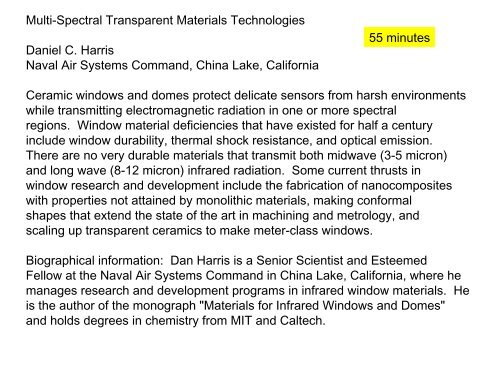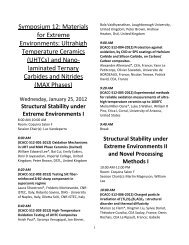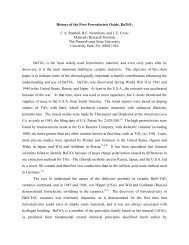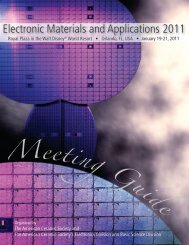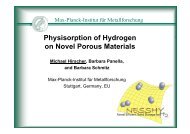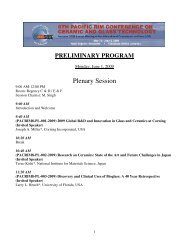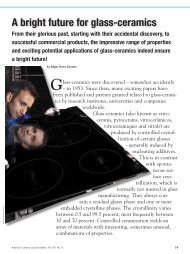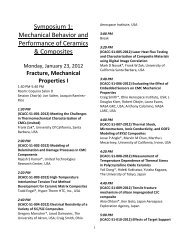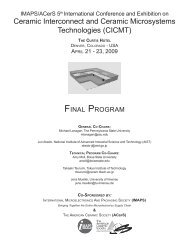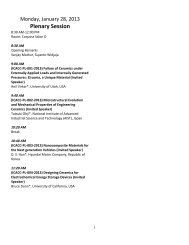Multi-Spectral Transparent Materials Technologies - The American ...
Multi-Spectral Transparent Materials Technologies - The American ...
Multi-Spectral Transparent Materials Technologies - The American ...
Create successful ePaper yourself
Turn your PDF publications into a flip-book with our unique Google optimized e-Paper software.
<strong>Multi</strong>-<strong>Spectral</strong> <strong>Transparent</strong> <strong>Materials</strong> <strong>Technologies</strong><br />
Daniel C. Harris<br />
Naval Air Systems Command, China Lake, California<br />
Ceramic windows and domes protect delicate sensors from harsh environments<br />
while transmitting electromagnetic radiation in one or more spectral<br />
regions. Window material deficiencies that have existed for half a century<br />
include window durability, thermal shock resistance, and optical emission.<br />
<strong>The</strong>re are no very durable materials that transmit both midwave<br />
55 minutes<br />
(3-5 micron)<br />
and long wave (8-12 micron) infrared radiation. Some current thrusts in<br />
window research and development include the fabrication of nanocomposites<br />
with properties not attained by monolithic materials, making conformal<br />
shapes that extend the state of the art in machining and metrology, and<br />
scaling up transparent ceramics to make meter-class windows.<br />
Biographical information: Dan Harris is a Senior Scientist and Esteemed<br />
Fellow at the Naval Air Systems Command in China Lake, California, where he<br />
manages research and development programs in infrared window materials. He<br />
is the author of the monograph "<strong>Materials</strong> for Infrared Windows and Domes"<br />
and holds degrees in chemistry from MIT and Caltech.


